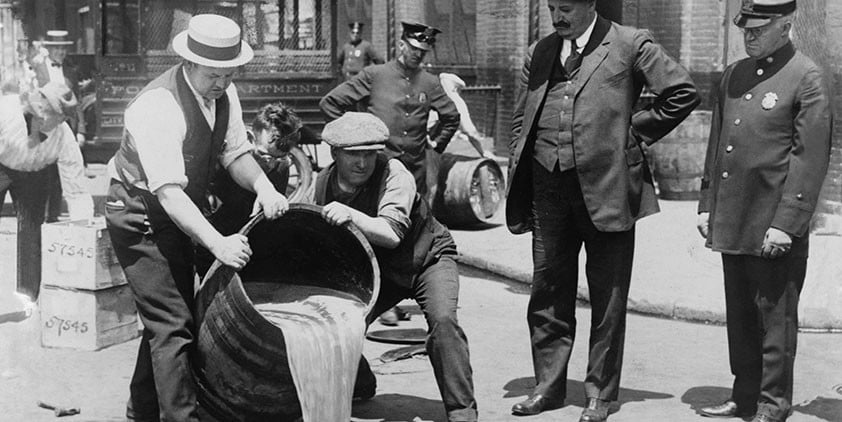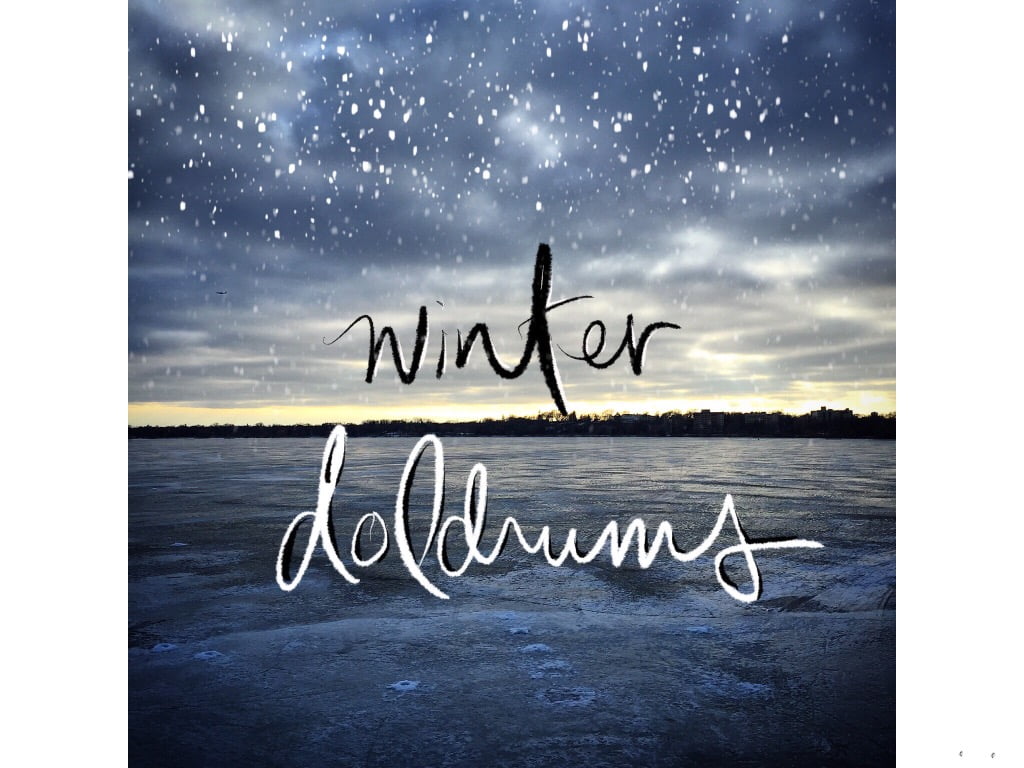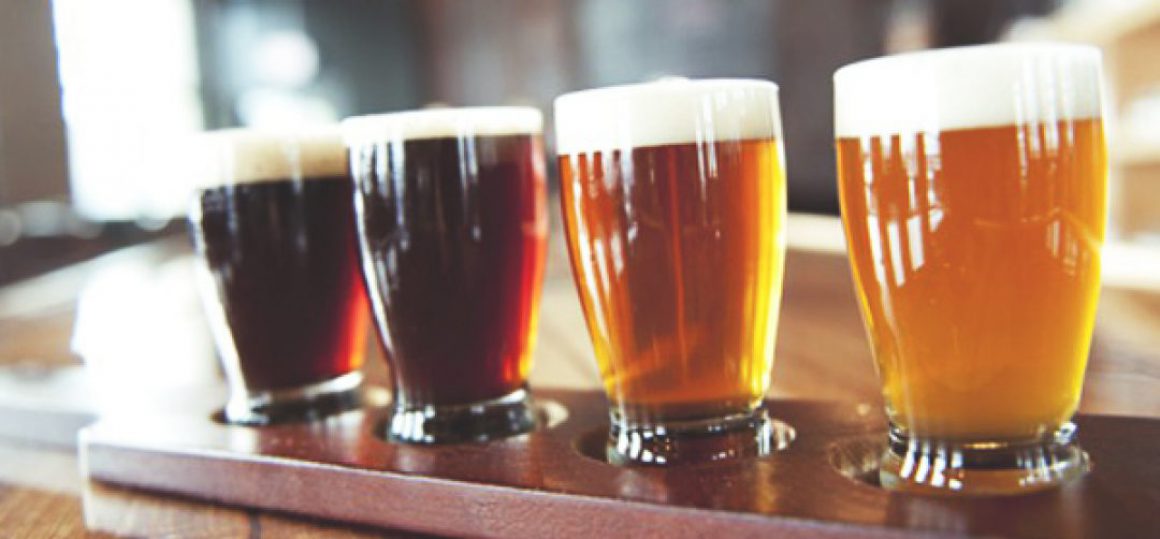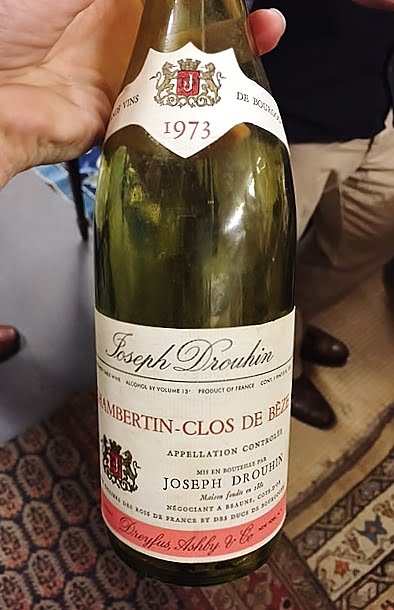Pre-Prohibition era cocktails to make you rethink flavor combinations and break the chains of traditional cocktail recipes.
Continue readingFor the Love of Beer
By Bennett Porter, Certified Cicerone®
The fourteenth day of February each year is naturally polarizing, often celebrated and often feared. Many of us call it Valentine’s Day, some call it Singles Awareness Day, an offbeat few probably actually celebrate the Feast of Saint Valentine. Whether you are reveling in love or independence, you should have a beer in hand. With a vast sea of beers from which to choose, you can assuredly find the perfect brew. I have selected some thematic and especially delightful beers that will suit the occasion.
For the Inseparable Pair: Evil Twin ‘The Perfect Matcha’ Berliner Weisse – $9.49/22oz
Matcha tea – nutritious and delicious! This powerful powdered tea is jam-packed with antioxidants and is thought to enliven the spirit. This Berliner Weisse style beer is brewed with matcha and pineapple, adding a sweet, caramelized herbal layer on top of the tart, salty, and crisp base. Drink it as an aperitif before the romantic dinner!
 For the Happy Parents: Boulevard Love Child No. 7 Barrel-Aged Sour Ale – $17.99/750ml
For the Happy Parents: Boulevard Love Child No. 7 Barrel-Aged Sour Ale – $17.99/750ml
A beer so good, well-behaved, and intelligent that it could be your new favorite child. Other siblings watch out! Better do extra dishes and shoveling to keep up. Love Child No. 7 is a complex blend of a Flanders-style sour red and a Quadrupel Ale aged in both red wine and bourbon barrels. Aging on lactobacillus and brettanomyces has added elements of refreshing acidity and funk. Red fruit aromas hint at a flavor profile of juicy berries, apple cider vinegar, plum, brown sugar, acidity and funk. Despite all the complexity, it retains excellent balance. Pairs well with funky blue cheeses, fruity desserts, and vinegar-based salads.
For the Dazzling Date: BauHaus Über Düber Sparkling Ale – $10.99/750ml
Good on ya’, mate! Über Düber takes inspiration from the Australian sparkling ale and turns it up a few notches. Boisterous Aussie hop varieties lend a sweet, fruity white grape and banana aromas. Grainy, sweet malty feels are elevated by a brisk carbonation, leading to a warming alcoholic finish. The perfect finish to a night on the town.
 For the Sweetest Smoocher: Ducato Baciami Lipsia (‘Kiss my Lips’) Gose Ale – $10.99/11.2oz
For the Sweetest Smoocher: Ducato Baciami Lipsia (‘Kiss my Lips’) Gose Ale – $10.99/11.2oz
Literally means “Kiss my Lips” in Italian, could it be any easier? Baciami Lipsia is a blend of 9 month oak-aged sour ale with a young ale brewed with Himalayan pink sea salt. The beer is then aged for a short time longer prior to bottling. Super crisp and citric with a soft saltiness. This harmonious interplay tastes quite unique!
For a Trip for Two: Indeed LSD Honey Ale – $10.99/4pk
This is indeed a mind-altering beer experience. Lavender, Sunflower honey, and Dates combine to craft a uniquely delectable brew. Take a whiff: lavender, rose petal, fig, and limey citrus aromas will transport you to another plane. Flavors reminiscent of biscuits, dates, honeycomb, and spicy botanicals bring you back to earth. Feel the flower power! … Are you experienced?

For your Spicy Cider Connoisseur: Left Foot Charley Cinnamon Girl Hard Cider – $7.99/500ml
Is your bae not that in to beer? Possibly cider is more their flava’. Cinnamon girl brings together the classic combo of apples and cinnamon. Northern Spy, Golden Delicious, and Ida Red apples from Michigan are allowed to age off the tree prior to pressing, concentrating sugars and softening starches. Fermentation is halted early, retaining some residual sugar to balance the spicy cinnamon. Of course, this drinking experience can only be completed by pulling out your trusty axe from high school and strumming out some Neil Young to your love. “A dreamer of pictures I run the night, you see us together chasing the moonlight, my cinnamon girl.”
 For the Final Goodbye: Badger Hill Traitor IPA – $10.49/6pk
For the Final Goodbye: Badger Hill Traitor IPA – $10.49/6pk
Maybe things have turned south in your relationship. You need something bitter and honest to take the pain away. It is time to move on to new beginnings, and a new tasty India Pale Ale in your rotation. Badger Hill Traitor IPA will ease your pain, there are more fish in the sea. Betray your traditional IPA, try one that defies convention. Punchy hop aromas from the C’s and Galaxy hop varieties. Tropical mango, papaya, orange, and caramel flavors segue into a minty, piney hop resolution. It’s time to turn over a new (hop) leaf!
 For a Name-Specific Gift: Your special someone possibly shares a name with a quaffable brew. Following are some options on hand.
For a Name-Specific Gift: Your special someone possibly shares a name with a quaffable brew. Following are some options on hand.
- Rodenbach Alexander Flanders Red Ale
- Great Divide Colette Farmhouse Ale and Orabelle Tripel
- Destihl Clarice Grand Cru Ale
- Castle Danger George Hunter Stout
- 10 Barrel Joe IPA
- Northgate: Maggie’s Leap Nitro Sweet Stout
- Lakefront My Turn: Mike Imperial Brown Ale
- Goose Island Sofie Farmhouse Ale, Matilda Belgian-Style Brett Pale Ale, Lolita Wild Ale, Gillian Farmhouse Ale, Madame Rose Belgian-Style Brown Ale, Halia Farmhouse Ale
A Travelogue from South Africa
South Africa’s future is very bright in the wine world. This is a very exciting time in the wine business and we are fortunate to be a part of it!
Continue readingWine Lies Your Mother Told You: Vol. 1
Sweet wines are for 21-year-olds who are still wet behind the ears—along with the uncultured, the inexperienced, and the crass. And because of this, Riesling should be avoided like the plague.
Continue reading4 Ways to Beat the Winter Doldrums
You know exactly where your favorite gin is located on the shelves. You inadvertently make a beeline to your tried-and-true brandy as soon as you come in the store. You get flustered when your staple vodka has relocated to a different section. But there’s another part of you that’s always looking out for something new, different, and a little off the well-worn path. Liquor Tom is the perfect guy for this job, and he’s unearthed a few hidden gems to bring some pizzazz into these dreary winter doldrums!
Letherbee Autumnal Gin | $34.99 750ML
A France 44 favorite, Letherbee Distillers out of Chicago releases two one-off seasonal gins per year, one in the spring and one in the fall—and they never release the same one again. This year’s Autumnal prominently features earthy flavors of dill, cumin, beets, caraway, and black pepper on top of their already-floral original gin. These fall flavors make for a hybrid gin verging on aquavit, the Scandinavian staple Minnesotans love oh-so-much. We’ve already sold out of Minnesota’s allocation and have now received a slice of California’s allocation. This earthy gin is perfect for a Bloody Mary, Hanky Panky or a Dirty Martini!
Cocktail: Classic Dirty Martini
- 2 ½ oz Letherbee Autumnal
- ½ oz olive juice
- 3 drops of Dashfire Orange Bitters
Stir and strain into a coupe glass, and garnish with 3 Filthy Bleu Cheese Olives.
Copper & Kings Craftwerks Sierra Nevada Smoked Porter Finished | $49.99 750ML
Copper & Kings has been producing high-quality craft brandy out of
Louisville, Kentucky for nearly a decade, and have started to create some of the most unique spirits on the market today. Last year they started to release collaborations with breweries around the country, where they send each brewery brandy barrels for them to age beer in. The breweries then send the barrels back to Copper & Kings, who then finish their brandy in the now-twice-used barrels for a whole calendar year. Our favorite was their brandy finished in Imperial Smoked Porter barrels from Sierra Nevada. It shows creamy malted vanilla tones, a slight hint of hoppiness and a lingering smoky note. It’s a brandy with scotch and bourbon tones that’s a beer drinker’s delight!
Cocktail: Stick it in a glass on the rocks and drink it!
Or a Brandy Manhattan
- 2 oz Copper & King’s Craftwerks Brandy
- 1 oz Carpano Antica Sweet Vermouth
- 2 dashes Angostura Bitters
Stir and strain into a coupe glass
Glenfiddich 14 Year Old U.S. Exclusive | $44.99 750ML
Great Single Malt Scotch at a good price is becoming harder and harder to come by. That’s why it was a breath of fresh air for Glenfiddich to come out with a 14 year Single Malt, aged exclusively in bourbon barrels and finished in newly charred American oak as an homage to our bourbon culture. What’s more, this delicious Scotch retails for the awesome price point of $44.99! This single malt is brimming with brown sugar, honey, vanilla, toasted oak spice, coconut, green apple, pear, and orange zest. Perfect for the bourbon drinker who would like to try out scotch!
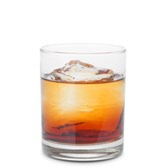 Cocktail: Stick it in a glass and drink it neat!
Cocktail: Stick it in a glass and drink it neat!
Or in a Godfather:
- 2 oz Glenfiddich 14 Year
- 1 oz Lazzaroni Amaretto Liqueur
- 2 Drops of Peychaud’s Bitters
Drink in a lowball glass with an ice ball
Amarula Cream Liqueur | $18.99 750ML
For anyone who’s always on the search for a quality replacement for Bailey’s at a lower price point, look no further than Amarula Cream! Made in South Africa with a blend of their native marula fruit and fresh dairy cream, Amarula shows bright caramel and butterscotch notes and a faint tropical fruitiness. The marula plant is unique to Africa and is in the same family as mangos, pistachios, and cashews. It holds a special place socioeconomically in South Africa due to the high amount of nutrients found in it. Some proceeds from each bottle purchased go to protecting elephants (closely tied to the marula tree) from being poached across Africa.Cocktail: Amarula Spiced Dram
- 2 oz Amarula Cream Liqueur
- 1 oz Buffalo Trace Bourbon
- 3 drops of Dashfire Allspice Bitters
Drink in a lowball glass on the rocks
Deconstructing Wine: Sauvignon Blanc
Grapefruit rind. Gunflint. Cat’s pee on a gooseberry bush.
Sign me up?
These are the oft-used descriptors for one of the world’s most popular grapes: Sauvignon Blanc. Bold, ostentatious, and never one to hide in the shadows, this wine is the life of the party. But think about it for a second: what do you feel when you indulge in a glass of Sauvignon Blanc? Refreshed. Energized. Awake. The aromas are in-your-face, the flavors are bold and zesty. The etymology of ‘sauvignon’ comes from the French word ‘sauvage,’ meaning “wild.” (Sometimes the French aren’t so confusing after all!) But like all of the other grapes we’ve deconstructed so far, Sauvignon Blanc reflects the soil and climate it’s grown in, which makes complete sense when you taste a Sancerre next to a Marlborough. That being the case, this Deconstruction is going to be set up a little differently, so as to highlight why it tastes different in various locales. Suit up for France, California, and New Zealand!
Sauvignon Blanc finds its home in one of France’s white wine heartlands: the Loire Valley. Like Pinot Noir, Sauvignon Blanc is as old as the hills. But it didn’t really find its foothold in wine drinkers’ hearts until well into the 20th century. The wines of the world-renowned region of Sancerre were heralded from the 12th century onward (Legend has it that King Henry IV, upon sampling the local libations while his army camped in the nearby hills, proclaimed, “By God, this wine is the best I have ever tasted! If all in the kingdom were to drink it, there would be no more wars of religion!”), but they were red wines. Pinot Noir was king for centuries in Sancerre, until the dreaded Phylloxera wiped out every single vineyard in the late 19th century. This gave vintners a chance to experiment with other grapes, and Sauvignon Blanc came out the winner.
The absolutely-most-important thing about why Sauvignon Blanc tastes the way it does in Sancerre is because of… oysters. Seriously! Sancerre started out submerged under the ocean just a few (hundred million) years ago. You can still find oyster shells, beach cobbles, and maybe even some plesiosaur fossils littered throughout various parts of Sancerre. The two major soils to remember are Oxfordian limestone and Kimmeridgean clay. Throw those terms around (along with methoxypyrazines) at your next dinner party and watch your guests’ eyebrows dance. The oyster shells, the limestone, the clay, and the flint (the 3rd important soil type) all add to the smoky, stony aromas and flavors Sancerre has become so known for. Take a dip into our first wine:
Domaine Paul Cherrier Sancerre—Sancerre, Loire Valley, France
SIGHT: To be completely honest, these wines are all going to look ridiculously similar: clear and watery. We’ll see a little variation as we get on to the New World styles, but if you hold this wine up to a bright light, you could fool yourself into thinking that it’s vodka.
SMELL: This Frenchie has a surprisingly muted nose. Delicate scents of lemon peel and fresh lime peek out from behind the strong presence of chalky minerality. If you have some of your kids’ sidewalk chalk handy, rub some between your fingers and see if the aromas have any resemblance of what’s in your glass.
TASTE: If the nose was less than exciting, the flavors of this wine definitely make up for it! That mouth-puckering, gum-clenching sensation you might be feeling is the full force of the acidity present in this Sauvignon Blanc. The midpalate and finish soften out with nuances of fresh white flowers and acacia.
Domaine Cherrier’s estate lies mainly on rocky Kimmeridgean clay, which produces wines with a little more body and texture and a pronounced floral note. Limestone typically produces wines with a fresher, fruitier character. Like most Sancerre producers, Cherrier blends Sauvignon Blanc from different vineyards together, in order to create a well-balanced, layered Sancerre that has characteristics from all soil types.
While the wines of Sancerre have always been well-respected in France, there wasn’t much to be shared beyond French borders. It was grown in small plots in various winemaking countries, but no one else had latched onto it. But there was one enterprising individual in California who thought it was a shame to let such a firecracker grape like Sauvignon Blanc lay by the wayside. His name? Robert Mondavi. You may have heard of him.
Robert Mondavi knew how easy it was to grow Sauvignon Blanc. It grew almost too well in a warm, temperate climate like Napa, and needed a little extra attention so it didn’t become Jack’s California Beanstalk. But it gave great yields and bold flavors, and Mondavi knew that the wine drinking public would go nuts over this wine—they just didn’t know it yet. In fact, they’d convinced themselves that they “hated Sauvignon Blanc!” It was too green, too vegetal, and tasted too much like green bell peppers and watery asparagus. But with proper vineyard management and a touch of oak barrel aging, Mondavi crafted a style of Sauvignon Blanc that stole the hearts of everyone who drank it. He only had to get people past the notion that it was a grape they said they hated, so he simply renamed it: Fume Blanc, a completely made-up term that sounded just sophisticated enough to trick people into drinking his glorious new creation!

Honig Sauvignon Blanc—Napa Valley, California, USA
SIGHT: If you hold this wine side by side with the Sancerre, you’ll see a tiny glimmer of lime green around the edges. Otherwise, this Napa Sauvignon Blanc is clean, clear, and sunshiny-bright. Sauvignon Blanc is nearly always meant to be drunk young and fresh. It can occasionally see some extended oak aging, but this is fairly rare. Even with some extra barrel aging, it rarely lasts beyond 5-6 years—it just doesn’t have the stuffing to last much beyond that. So if you come across a Sauvignon Blanc that looks yellowed or even brown around the rim, send it back!
SMELL: The aromas here should be a little more familiar if you’re an avid Sauvignon Blanc fan. It has a bolder nose than the Sancerre, with more tropical fruit than citrus. Chop open a honeydew melon if you have one handy (and then eat it later with some prosciutto and balsamic). Any similarities? There’s also a faint aroma of gooseberry and kiwi. That “gooseberry” aroma (such an esoteric term! Who eats gooseberries anymore? They’re delicious, BTW) is sharp, pungent, and is the euphemistic name for the unfortunate “cat pee” descriptor.
TASTE: Flavors of juicy, ripe tropical fruits explode on the palate. The astringency of the Sancerre is nowhere to be found here—instead, we get lemon/lime flavors and ripe kiwi. The texture is different, too: perhaps this wine is a little rounder than, and not quite as thin as the Sancerre. (Think skim milk vs. 1%.)
True to Mondavi’s original form, Honig’s Sauvignon Blanc sees 8 months aging in neutral oak. This method rounds out the acidity and calms those harsh edges down. Napa’s temperate climate and warm-to-hot August harvest temperatures give the grapes a plump, ripe quality that seems a far cry from what we tasted in the first wine.
About the same time that Mondavi was having grand thoughts about Sauvignon Blanc in California, a few forward-thinking Kiwis began conniving in a similar fashion. Sauvignon Blanc was not the natural choice, though: vintners first experimented with Riesling and Muller-Thurgau before they happened upon Sauvignon Blanc. The first Sauvignon Blanc vines were planted in Marlborough on New Zealand’s South Island in 1973, and before those poor Kiwis knew it, the nearly-tee totaling country became a world player in wine production and the sheep population cried out in protest.
New Zealand has a lot going for it in terms of growing wine grapes: it gets a lot of sunshine but not much heat, keeping the sugar and potential alcohol levels in check but allowing the grapes to become fully phenolically ripe. The phenols in a grape are what give those potent aromas and deep flavors, and the more time a grape has to develop them, the bolder the wine is.

Whitehaven Sauvignon Blanc—Marlborough, New Zealand
SIGHT: This wine definitely has a green hue to it! Lively and vibrant, it seems to shimmer with what’s going to come on the nose and palate.
SMELL: I’ll bet you smelled the wine before you even looked at it, right? You can’t help but get a huge whiff of those gnarly methoxypyrazines (scientifically speaking, a class of chemical compounds that produce odors of green, herbaceous notes). Bring your cat’s litter box over. That’s right, set it right down next to your fancy Riedel glasses. Better yet, bring your cat over too and see if he’ll provide a fresh sample.
TASTE: Don’t worry—you don’t need to taste the cat pee. There’s a ton of fruit on the palate here instead: grapefruit juice, candied lime and sharp citrus oils burst on your tongue with just a tiny hint of fruity sweetness hanging out on the finish.
Sauvignon Blanc grows too well in New Zealand. Winemakers went through some long, hard years of wines that were diluted, leafy and thin because the vines never had to work hard at producing fruit. But with careful canopy management, vine training and selective thinning, winemakers learned how to make the vines concentrate their energy to the grapes, instead of to the leaves which end up shading the fruit too much. And from sheep to Sauvignon, the rest is history for New Zealand!
Whether you enjoy Sauvignon Blanc or not, it’s a great grape to practice on for wine identification and blind tasting. Not every party girl is going to be liked by everyone, but she sure gets noticed in a hurry! Sauvignon Blanc will never disappoint in terms of audacious flavors and assertive aromas, and the world seems to agree that this is one grape that will always be welcome at any affair.
The Year of Beer: 2017’s Up-and-Comers
As we transition into 2017, there’s no better chance to reflect on how far craft beer has come, or where it is headed. Like most of the nation, Minnesota’s beer business is booming, with nearly 150 active breweries. Over the last five years beer production by volume has doubled. This rapid growth can be mostly attributed to a handful of breweries that opened between five and ten years ago, who are now in full stride, only slowed by supply, not demand. What breweries will you be seeing a lot more of in 2017 and beyond? Here are a few of our predictions.
Able Seedhouse + Brewery (c. 2015)
Able was founded less than two short years ago by a group of friends with aspirations of building things together by hand. In an age where people live with all the comforts brought by technology, they wanted to remind us all that we are Able. After setting up shop in a former GE light bulb factory, Able has been quick to pounce with a selection of beers on draft and two flagships beers packaged in cans. You may notice the word ‘Seedhouse’ in the title; the brewery has aspirations to one day perform all the malting necessary for their brewery operations in-house, a sort of farm-to-brewery business plan. Able has been forging relationships with local farmers to acquire small batches of grain, grown for flavor, not yield. Modern malting can be a complex process that is typically performed in large facilities with advanced technology. Able is planning to show that high-grade malt can be produced on a small scale. We look forward to seeing what’s on tap from this rising star in 2017!
- Supergiant Golden Ale – This beauty is brewed with a bit of oats and lactose sugar, adding a light creamy sweet mouth feel with notes of pear and melon. Supergiant is clean and bright, ready to be your pal at moment’s notice.
- First Light IPA – Yearning for an IPA that goes down easy? Look no further. First Light clocks in at 6.0% abv but drinks like a session IPA. Juicy aromas of tangerine and mango dance atop a cracker-y malt character. Deceptively light, with a crisp whack of bitterness on the finish.
***Stop by the France 44 Tasting Bar this Friday, Jan 13th from 4-6:30 p.m. to hang out with the Able crew and sample their fantastic flagships. ***
Modist Brewing (c. 2016)
Modist has flipped an old Morton’s salt factory into a gleaming, industrial space that features futuristic equipment capable of brewing categorically unique beer. What separates Modist from every other craft brewer in the US is how they separate wort from spent grain. Modist purchased a customized mash filter that acts similar to a French press, replacing the need for a lauter tun, which acts like a pour-over coffee filter. Why does this matter? There are a few benefits. Modist can utilize grain flour, which would otherwise clog conventional lauter tuns. They can create beers that feature any grain in any ratio. Wheat, rye, oats, etc could all potentially serve as the base grain for a beer. A mash filter vastly improves their brewhouse efficiency, allowing them to brew the same batch as a traditional brewhouse, but requiring less hops, malt, and water. Because of their unique approach, Modist’s beers don’t fit into BJCP style guidelines. Come grab a Crowler from the France 44 specialty cooler and prepare yourself for an imaginative tasting experience!
- First Call Cold Press Coffee Lager – This fair-hued, quaffable lager is here to trick your senses. Is that coffee? Yes, a punchy coffee aroma greets your senses like freshly ground beans. Soft grainy malt notes lay the base for notes of java, raisins, and caramel. The overall dry, crisp palate finishes with a delicate sweetness.
- Toats Oat Pale Ale – This sessionable oat ale is comprised of almost 70% oats. White grapefruit and toasty oat aromas leap out of the glass. A big, creamy mouth feel from the oats lead to a citrus-driven hop finish.
- Wasteland Rye IPA – A hoppy, dark brew created with over 50% rye. Dense and malty in character, with a resinous, citrusy hop note. Dry, with a spicy rye finish.
Sisyphus Brewing (c. 2014)
Sisyphus, the man damned to push a rock up a hill for all of perpetuity. It sounds like an existence engulfed by struggles. But you won’t struggle to realize why this brewery has a bright future ahead. Brewer, co-founder and comedian, Sam Harriman, was a philosophy major as an undergrad, and found resonance with the myth. As part of the human condition, we all find ourselves in similar struggles. How do you create meaning with what’s in front of you? Brewing quality beer is one way to create opportunity. Batches have always been small, so the beer rarely makes it out of the taproom. Times they are a changin’ though. This week Sisyphus released their first bottled product:
- “The First Beer We Distributed” East Coast IPA – Delightfully hazy in appearance. Pungent, tropical hop aromas from Citra and Equinox hops. Grab a bottle before they’re gone!
*** Not only does Sisyphus pour a good pint, they double as one of the premier comedy venues in town. Check online for a list of upcoming acts and information on amateur night.***
Deconstructing Wine: Pinot Noir, part 2
A textbook Pinot noir will have a medium body (think skim or 1% milk), medium-low tannins, medium-high acidity, and medium alcohol (usually around 13% ABV). Pay close attention to any mouthwatering sensations in order to gauge the acidity levels in each wine. Also note what the textures of the wines feel like—especially compared to what you thought of Cabernet in one of our previous Deconstructions.
Wine #1: Domaine du Prieure “Moutier Amet” Savigny-les-Beaune 2013—Burgundy, France
SIGHT: We’re starting off with a classic! This wine was grown in the heart of Burgundy—the motherland of Pinot. Note how clear and bright the color of this wine is: brilliant ruby with a soft pink rim. A swirl of your glass will show little to no staining—a great sign that this wine was made from grapes with rather thin skins (a telltale sign for most Pinots), and clocks in at a pretty moderate alcohol level.
SMELL: Give this wine about 10 minutes to air out, and it will reward you with delectable candied cherry, red licorice, and strawberry aromas. Give it 5 minutes more, and you may start to notice some non-fruit aromas: there’s a gentle mineral element here, along with a soft hint of rosemary or sage, a fresh red floral smell, and delicate suggestions of sautéed mushrooms, new leather, and forest floor.
TASTE: Let’s talk structure first: This wine isn’t thick or heavy, but it’s not watery either; we’ll say it has a medium body. Now swallow a sip, and note how quickly your mouth starts to water immediately after. When a wine has that sort of impact on the finish, we can be sure it has dominant acidity. But what about those tannins? They’re barely there—maybe just dancing along your cheeks before disappearing. The wine also doesn’t burn on the way down, and is more refreshing than it is weighty. This is further confirmation that the wine has moderate alcohol, and therefore comes from a moderately cool climate. The flavors seem to match what we got on the nose, with perhaps some additions of rhubarb and a hint of fresh parsley or tomato leaf on the very end.
This is a perfect example of a young, vibrant red Burgundy. The fruit is pure, the acidity is fresh, and the mineral element in the wine isn’t shy. Be sure to pick up a second bottle of this wine or one similar to it so you can squirrel it away for a few years, because soon it will start to develop a whole new set of aromas and flavors: the fruit will fade gently into the background, while tertiary aromas of earth, mushroom, leather, and herbs will start to peek out. It takes patience (we’re awful at that), but it’s worth it!
Wine #2: Arterberry Maresh Dundee Hills Pinot Noir 2013—Oregon
SIGHT: This wine is from the same vintage as the Savigny-les-Beaune, but it’s seemed to age a little quicker. Note the more delicate color in this one as compared to the Burgundy, and take a look at the rim: it fades to a gentle garnet color with a little hint of orange. That’s evidence of a slightly aged wine. You’re in for an olfactory trip!
SMELL: You know what? You have a few bottles of wine open… you may as well open up that sour cherry lambic beer that’s in your fridge, too. Take a whiff of that, and then go back to this funky little Oregon Pinot. Same? Same. Hibiscus tea, ground sage, perhaps some dried cilantro and basil, freshly dug mushrooms with the mud still caked on, rose petals… this wine is rife with crazy smells. Oregon Pinots are known for having a deeper, darker, earthier smell than a lot of Californians, and this one is no exception. There’s definitely some red fruit in there, but it’s hiding behind that note of fresh blueberry skin.
TASTE: The acid is screaming in this wine! Do you feel it in your cheeks? The tannins are barely there, and the alcohol seems to be just above a whisper. Flavors of tart cherry, under-ripe blueberry, and tea leaves come through on the palate. This small-production Dundee Hills wine is lithe and ethereal with a “wispiness” on the finish.
It’s hard to characterize Oregon Pinot in one sentence, but they will generally be lighter in body and higher in acidity than most California Pinots. A lot of wine drinkers will peg Oregon Pinot as a good “middle ground” style, taking notes from both France and California. Arterberry Maresh is a pretty small producer, and they don’t fine or filter their wines. This leaves you with a pretty unique, characterful expression of Pinot, yet still falls firmly within the Oregonian style.
Wine #3: Cultivate Pinot Noir 2014—California
SIGHT: Hold this wine next to the first two—there should be a markedly deeper hue to the Cultivate. You might see a touch of staining and some noticeable tears falling down the side of your glass, too. This tells us, of course, that this wine will probably have a higher alcohol content, and most likely saw a little more extraction during the winemaking process than the first two. This also tells us that the climate this wine is from is quite a bit warmer than Oregon or France!
SMELL: Whereas you turned to your savory herbs and spices with the Oregon Pinot, here you should be opening your sweet baking spices. Beyond the fresh, juicy red fruit notes of cherry and strawberry, see if you can pick out clove, nutmeg, cinnamon, and even garam masala if you have that available. Finally, a very common aroma in California Pinots is that of cola. Crack open a Cherry Coke—any similarities?
TASTE: The intensity of flavors in this wine make the other two seem flighty and delicate. The body is fuller (think 2% milk here), but still with decent acidity and tannins. Does the back of your throat feel nice and warm as you swallow? The alcohol level here beats out the first wines by a long shot! Ripe black cherry, raspberry, cherry cola and a hint of strawberry jam do cartwheels around each other, and the wine finishes with a hint of fruity sweetness.
This Pinot is a spot-on representation of what to expect out of a good California Pinot. Rich and ripe with red fruit notes, it has that nuance of cola and a whole spread of baking spices. The alcohol level is over 14%, which accounts for that hint of sweetness on the finish, as well as the fuller body.
We’ve explored some fairly youthful, fruit-driven expressions of Pinot noir in this Deconstruction. They represent the style so many people are familiar with, and it explains why the grape is so dang popular. It’s important to understand this young stage of Pinot, because you have to know how a wine starts off in order to understand where it’s going. The Arterberry Maresh from Oregon led us to see how Pinot can progress with age—sometimes it takes up to 10 years, sometimes it only takes 3-4. To many Pinot lovers, this is the “real Pinot”—when it starts to morph into layers of humus, flowers, fungi, and savory dried herbs. When I get these things in an aged Pinot, there’s a sort of sweet melancholy that seems to surround the wine. It’s at the same time both comfortably familiar and wondrously complex.
If you ever fall in love with a particular Pinot, be it from Oregon, California, Burgundy, or elsewhere, be prepared to embark on a lifelong journey of pain, regret, and heartache. But you won’t care, because you know there’s always a slim chance that you’ll come across another bottle that will bring you back into that ethereal, otherworldly state that only Pinot can do. It’s unlikely, but somehow it’s always worth another shot.
Cheers to Pinot, the most maddening grape in the world!
Deconstructing Wine: Pinot Noir, part 1
Pinot noir is known as “the heartbreak grape,” and they don’t call it that for nothing.
Continue readingSatisfy Your Inner Wine Geek: Wine Trivia
Think you know a thing or two about wine? Have a go at the France44 Wine Trivia quiz! Answers are at the bottom—no peeking!
1) What is a crémant?
a) A cream-based wine
b) A French sparkling wine produced outside of Champagne
c) A French sparkling wine noted for its creaminess
d) 100% Chardonnay Champagne
2) What is Napa Valley’s Frog’s Leap Winery named after?
a) There used to be a frog farm on the estate
b) It’s the measurement of a frog’s leap from the winery to any of the estate vineyards
c) They wanted to poke fun at Stag’s Leap Winery
d) They want to highlight how important biodiversity is to their winery
3) Pinotage is a cross of what 2 grapes?
a) Pinot Gris and Hermitage
b) Cabernet Sauvignon and Syrah
c) Pinot Noir and Cinsault
d) Concord and dirt
4) How do you pronounce Freixenet, Spain’s #1 producer of Cava?
a) frightened-eh?
b) fresh-uh-net
c) freaks-in-net
d) fray-shnay
5) Bobal is a little-known grape from ______ that is rapidly gaining popularity.
a) Australia
b) Argentina
c) California
d) Spain
6) We love dogs, and so do winemakers! Out of our almost 3,000 wine labels at France44, how many of them sport pictures of hounds (or their canine relatives)?
a) 23
b) 11
c) 18
d) 68
7) What grape is used to make Vino Nobile di Montepulciano?
a) Montepulciano
b) Sangiovese
c) Nebbiolo
d) Noble grapes
8) What grape is used to make Brunello di Montalcino?
a) Montepulciano
b) Cabernet Sauvignon
c) Sangiovese
d) Nebbiolo
9) What grape is used to make Morellino di Scansano?
a) Colorino
b) Sangiovese
c) Barbera
d) Dolcetto
10) What the heck is on Matthiasson’s wine labels?
a) Ballet dancers
b) Grape vines
c) Nut crackers
d) Pruning shears
11) What is the “Mistral”?
a) A strong wind that blows constantly in France’s southern Rhone Valley
b) A specific soil type found only in Jura
c) The head honcho at every French winery
d) The national after-dinner digestif of Greece
12) Our General Manager, Chris, has worked harvests for this superstar California winemaker.
a) Fred Franzia
b) Russell Bevan
c) Chuck Wagner
d) Dale Peterson
13) How is Madeira wine made?
a) It develops a layer of yeast called flor and ages within a solera barrel system
b) It’s fortified, then heated for 3 months
c) It’s mixed with clarified sea water to give it its slight brininess
d) It’s distilled, then poured over smoked palm leaves
14) Bell’agio Chianti’s straw basket is called a _______.
a) Straw basket
b) Wine hammock
c) Fiasco
d) Diablo
15) This dude is the patron saint of vineyards and winemakers, and his picture is here.
a) St. Vinotheque
b) St. Sylvan
c) St. Knoll
d) St. Urban
16) This France44 staff member went to high school with the designer of the Rabble wine labels.
a) Dustin
b) Adam
c) Doug
d) Zach
17) What grape is Prosecco made from?
a) Pinot Grigio
b) Prosecco
c) Glera
d) B and C
18) This French wine is made in the same way as dry Sherry from Spain.
a) Pineau des Charentes
b) Sauternes
c) Vin Jaune
d) Beaujolais Nouveau
19) What does “LBV” stand for on some Port bottles?
a) Lost Baby Viper
b) Les Beaulieu Vino
c) Last Bottle Vine
d) Late Bottle Vintage
20) Which wine label sports Salvador Dali and his pet ocelot?
a) Hamilton Russell Pinot Noir
b) Tridente Tempranillo
c) Field Recordings “Wonderwall” Pinot Noir
d) Orin Swift “Pretty Kitty” Red Blend
ANSWERS
1) B. Try the Clavelin or the Antech—a couple staff favorites!
2) A. Read Frog’s Leap story while you’re sipping on their incredible Chardonnay.
3) C. Pinot Noir and Cinsault, known as Hermitage in South Africa. This is a great introductory bottle if you’re not familiar with Pinotage yet.
4) B. Now you know Catalan!
5) D. We have two in the store!
6) C. Double points if you can spot all of them.
7) B. Tuscany’s “noble wine,” Sangiovese (known in Montepulciano as Prugnolo Gentile) has to make up at least 70% of the blend in Vino Nobile.
8) C. A special clone of Sangiovese that only grows in the tiny Tuscan town of Montalcino.
9) B. Apparently the answer to every question is “Sangiovese.”
10) D. Use your imagination a little—you’ll see it.
11) A. Rouge-Bleu’s “Mistral” is a delicious, funky little wine made in honor of this crazy wind.
12) B. Larger than life, and a Minnesota native! His Pinots are incredible.
13) B. This method is meant to replicate what would happen to the wine on its long sea journeys back in the 18th century.
14) C. What a fiasco!
15) D. And the Knolls’ exquisite Gruner Veltliner pays him dutiful homage.
16) A. Check out her amazing website!
17) D. Same grape!
18) C. This is an experience in a bottle—Rolet makes a fantastic expression of it. Make sure you have some olives and cheese to go along with it!
19) D. Want to try a vintage port but don’t want the hefty price tag? LBVs see more wood aging than regular vintage ports, and unlike vintage ports they are ready to be drunk upon release.
20) C. Juicy and ridiculously fun to drink.
How’d you do?
1-7 points: Well… you’ve gotta start somewhere, right?
8-14 points: Not bad! You clearly know more than the Average Joe.
15-19 points: I bet you’ve read through The Wine Bible a few times.
20 points: Either you cheated, or you work at France44.
